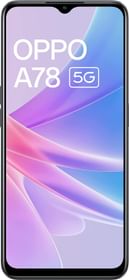Your smartphone operating system, App codes, App data and all your personal data is placed in storage. Since your processor frequently needs to fetch this data or write new one to the storage (Apps can’t always remain in RAM), the quality and quantity of storage can have a profound impact on your overall smartphone experience.
Except for entry level phones (Under 5,000 INR) almost all phones these days offer 16GB of internal memory. OEM’s haven’t always been this generous though. Little more than a year ago, we saw Android One phones manage surprisingly well with just 4GB of storage. So, exactly how much storage does one need? Can SD card make-up for the lack of internal storage? Is internal storage better? Let’s try and answer some of these questions in this beginner’s guide on smartphone storage.
Also Read: Decoding Chipsets – A Beginner’s Guide For Understanding Smartphone Processors
To begin with. Let’s elaborate on some basics.
Internal storage
Internal Nand Flash storage is the default amount of storage your OEM provides. As most of you must know, it is preceded by a number, say 8GB, 16GB or 32GB, which is misleading. A part of the storage is reserved for OS, system apps and pre-loaded apps and what is actually free at user end is at least 3 to 4 GB lesser than what is advertised.
Besides quantity, the quality of internal storage matters. A lot.
Most (Almost all) smartphones and oother consumerselectronic equipment today come with eMMC (embedded MultiMediaCard similar to SD card) storage – the most popular type of Flash storage + controller circuits package. eMMC memory solutions are of different ranking with eMMC 5.1 being the latest.
Your eMMC storage performance degrades with time, as you keep filling it. To avoid performance penalty, it is advised that you keep about 20 percent of your storage free at all times.
Samsung introduced UFS storage to smartphones with Samsung Galaxy S6/ S6 Edge. The same is now available in many other phones including the recently launched Mi5. Long story short, your UFS storage is way faster than regular eMMC storage. Unlike eMMC Storage, your processor can read and write to it simultaneously and there is command queue too, which further makes the communication between CPU and storage controller more efficient.
Also Read: ‘RAM’sutra: Everything You Need To Know About RAM On Your Phone
(Image source: Samsung)
eMMC 5.0 VS UFS 2.0?
Exactly how much faster? Samsung says its UFS 2.0 solution have a sequential read speed, sequential write speed, random read speed and random write speed each 1.40, 1.66, 2.71, 1.07 times faster, respectively, than eMMC 5.0.
Be it eMMC storage or UFS 2.0, both are significantly faster than SD card.
External Storage or SD cards
SD cards basically include NAND Flash memory chip on a circuit board along with as SD controller. Not all SD cards are equal. Speed you get is indicated by ‘Class’ number. A Class 10 or UHS II SD card is faster and more expensive than a Class 4 card. Even the fast SD cards available in the market can’t compete with your smartphone’s internal storage in terms of speed and overall performance.
So now you know what’s wrong with SD card. But they continue to be popular because they constitute an inexpensive way of augmenting phone storage.
Also Read: Beginners Guide for Choosing The Perfect Smartphone Display
Google’s Take On SD Cards
Google hates SD cards.
That wasn’t always the case though. In fact the Nexus One, the first nexus phone, had an SD card slot. However, with Android Honneycomb Google ditched its reliance on external storage and chalked down guidelines for how OEMs should implement SD card support. These guidelines were later strictly enforced with Android KitKat (which in turn lead to widespread unrest in Android community).
Besides performance restrictions, SD cards are formatted as FAT file systems because that has been a norm since ages and doing otherwise will break compatibility with many devices. The FAT file system is kind of archaic now and doesn’t support file and folder permission control, and thus Google sees it as security liability (one rouge app could have access to other app’s folder on SD card and write malicious code there prior to KitKat).
Google fixed things with Android Lollipop, where changes were made to help app request richer access to SD card (or full access too). With Android Marshmallow, Google went that extra mile and introduced adoptable storage that allows SD cards to be configured as internal storage (but you are not allowed to remove or unplug SD card once it’s configured as internal storage).
But at the end of the day, Google still hates SD cards. And slowly and steadily other Android OEMs are picking on the notion too.
Personal Take
I, for one, have been a long time Andorid user and with passing days/months/years I have gradually moved away from SD cards. External storage and internal storage on Android has been a dirty mess for years.
Each OEM has a different implementation. Some allow you to install apps to external storage, others don’t. Some allow you check SD card as default storage other’s don’t. Sometimes you can move parts of apps to SD card sometimes not. These issues are further exacerbated for anyone who frequently changes phones.
I am often clueless about what ended up on SD card and what still lies on the internal storage, whenever I go fishing for files using a file manager. Things were worse till a couple of years ago when OEMs partitioned internal storage and there used to be a “Phone Storage” which file managers read as SDcard0. Those were the days when you could have 10GB free on internal storage, but still get insufficient storage message on playstore. Since modern phones don’t suffer from this ailment we won’t be discussing this further.
It is indeed convenient to let go of SD card altogether. However, higher storage variants are pretty expensive and that makes a world of difference in cost sensitive markets like India. My advice is that you use SD card, but only for storing Media files and Photos. Don’t bother moving apps and other files to SD card and don’t bother using it as adoptable storage. But that is more of a personal opinion.
Also read: Get A Sense Of Sensors That Are Packed Inside Your Smartphone
Conclusion
So that brings us to the million dollar question. How much minimum storage do I need? That largely depends on your individual needs. If you ask me, you should aim for at least 32GB of internal storage if you are planning to hold on to your phone for a year or more, and plan to keep even one graphic intensive game on your phone. 16 GB is manageable too, but will require you to be judicious and to indulge in periodic spring cleaning.
In 64 bit architecture, register size is bigger and thus pointers and variables used in OS take more space. This means at least 16GB of internal memory is mandatory for optimum performance. Transition to 64-bit in 2015 has lead 16GB storage become a norm even in affordable phones. More of internal storage is always a good thing. The quality of storage is almost never advertised, so you haven’t got much to choose from in this regards.
Last updated on March 5, 2018.







































Hi, really enjoyed your post. Have a question though, I want to upgrade my OnePlus device internal storage how can I do that?
You can’t do that.